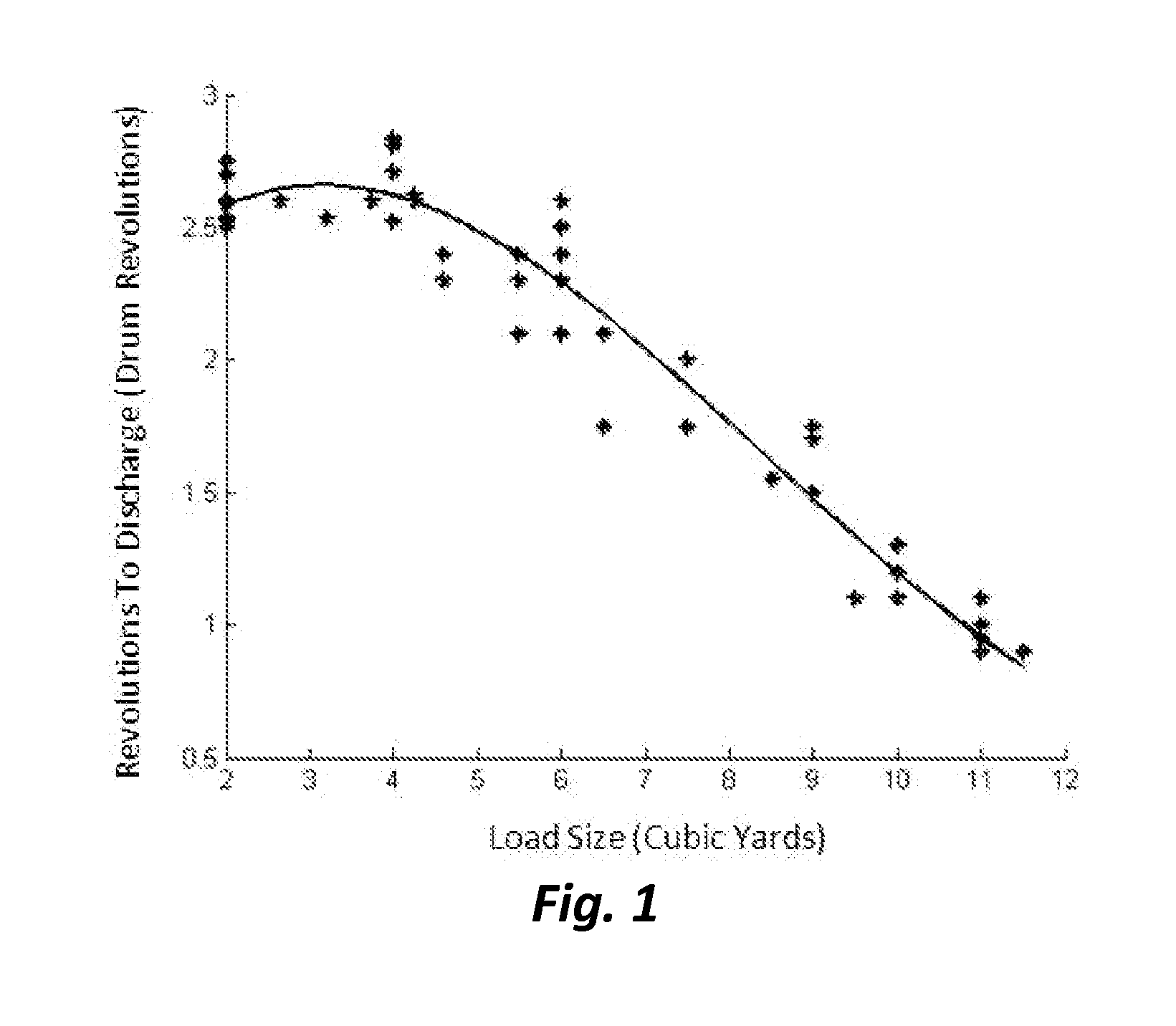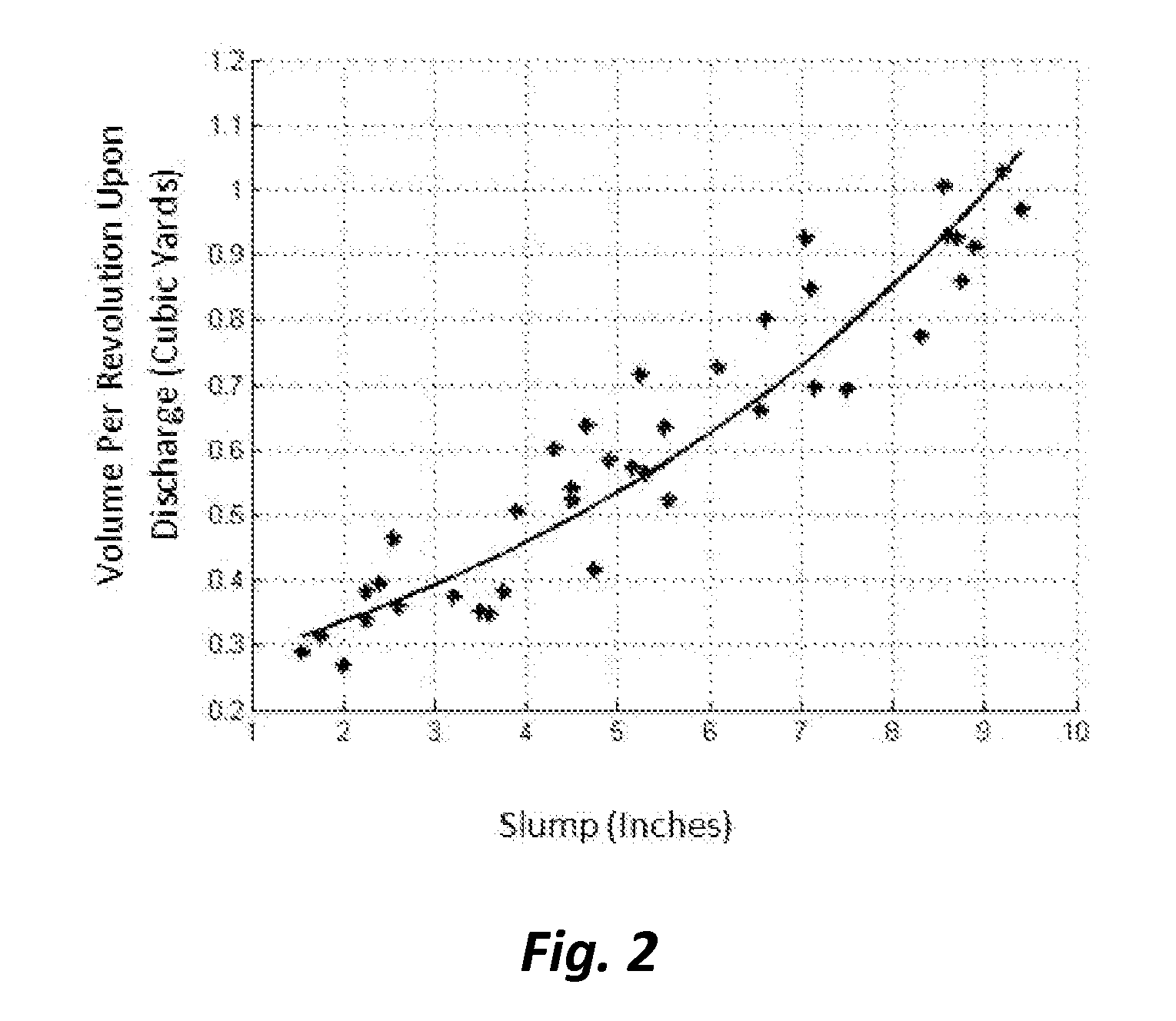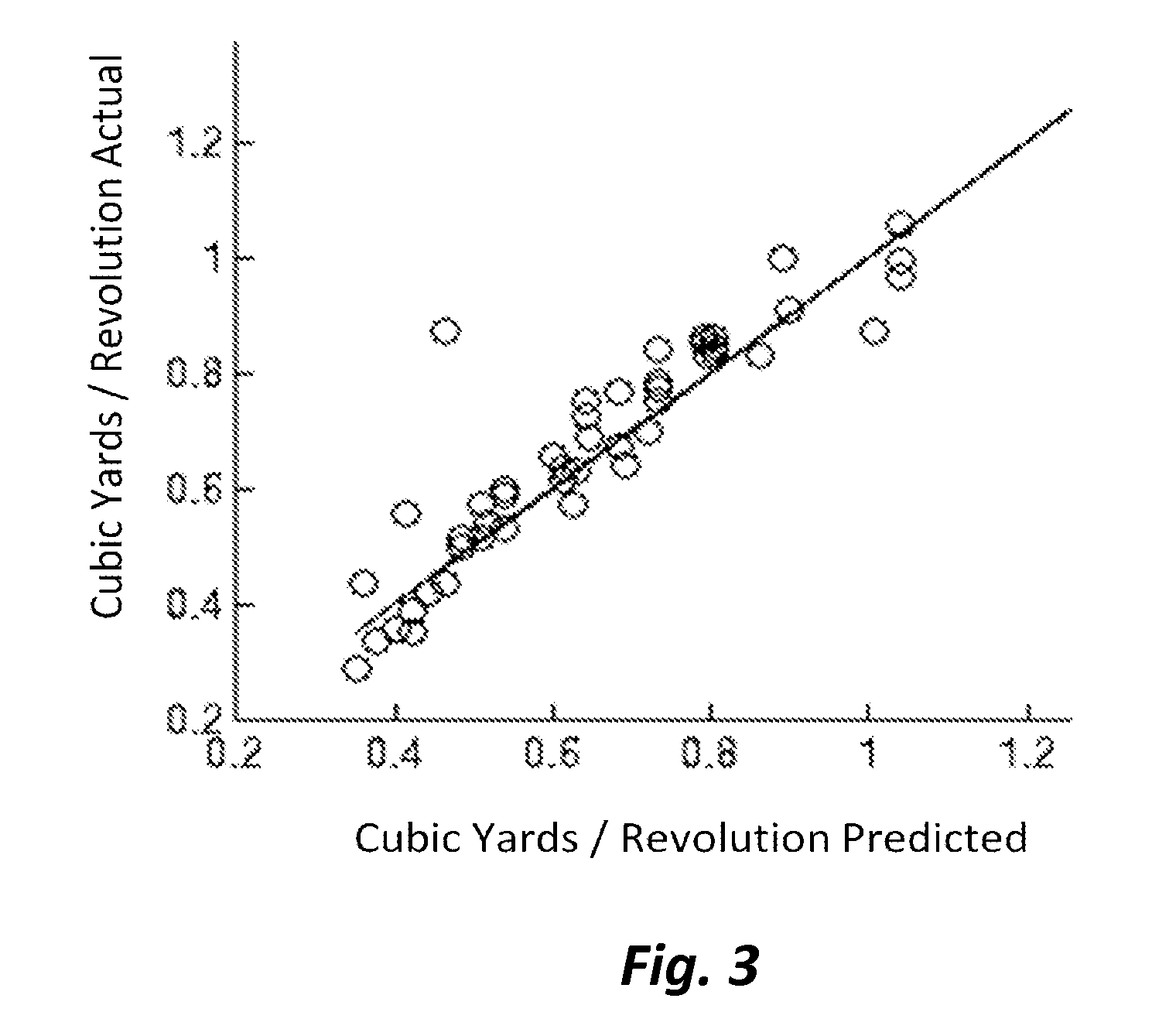Treating and reporting volume of concrete in delivery vehicle mixing drum
a technology which is applied in the field of concrete manufacturing, can solve the problems of insufficient accuracy and practical convenience of prior art methods for calculating the volume of concrete remaining in the truck after delivery, and achieve the effect of convenient, high-precision and new methods for treating concr
- Summary
- Abstract
- Description
- Claims
- Application Information
AI Technical Summary
Benefits of technology
Problems solved by technology
Method used
Image
Examples
Embodiment Construction
[0029]The term “concrete” as used herein will be understood to refer to materials including a cement binder (e.g., Portland cement optionally with supplemental cementitious materials such as fly ash, granulated blast furnace slag, limestone, or other pozzolanic materials), water, and aggregates (e.g., sand, crushed gravel or stones, and mixtures thereof), which are effective for forming a building or civil engineering structure when in a hardened state. The concrete optionally contains one or more chemical admixtures, such as plasticizing admixtures (including water-reducing agents, such as lignosulfonates, or superplasticizers (e.g., polycarboxylate comb polymers), set retarders, set accelerators, air entrainers, air detrainers, strength enhancers, pigments, colorants, fibers for plastic shrinkage control or structural reinforcement, and the like.
[0030]Conventional chemical admixtures are contemplated for use in the present invention. When incorporated into left over or remainder c...
PUM
| Property | Measurement | Unit |
|---|---|---|
| Pressure | aaaaa | aaaaa |
| Size | aaaaa | aaaaa |
| Rheological properties | aaaaa | aaaaa |
Abstract
Description
Claims
Application Information
 Login to View More
Login to View More - R&D
- Intellectual Property
- Life Sciences
- Materials
- Tech Scout
- Unparalleled Data Quality
- Higher Quality Content
- 60% Fewer Hallucinations
Browse by: Latest US Patents, China's latest patents, Technical Efficacy Thesaurus, Application Domain, Technology Topic, Popular Technical Reports.
© 2025 PatSnap. All rights reserved.Legal|Privacy policy|Modern Slavery Act Transparency Statement|Sitemap|About US| Contact US: help@patsnap.com



